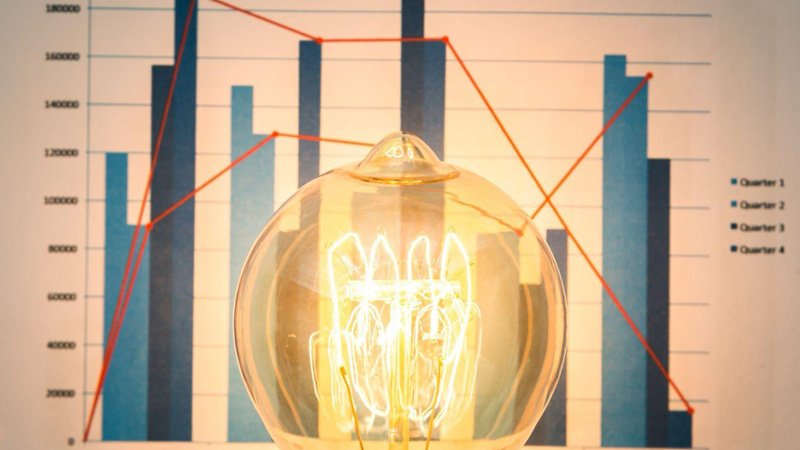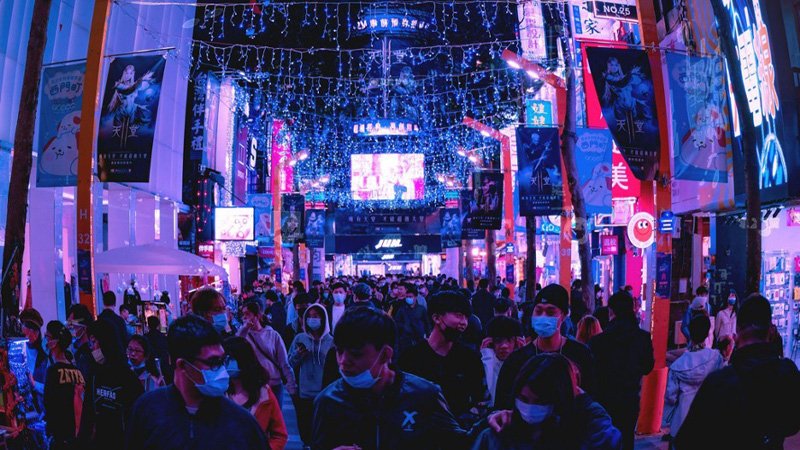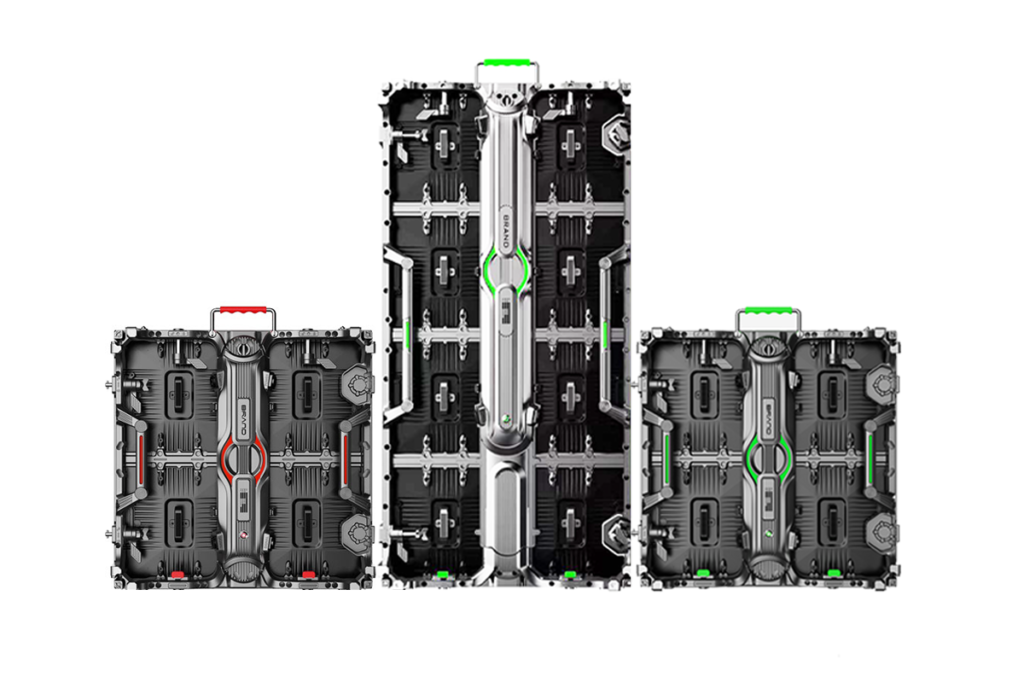Are you still measuring light bulbs according to their watts? Let us put down the run-of-a-mile curtain and introduce lumen. We’ve all grown accustomed to judging a light bulb’s brightness by its wattage. But with the advent of energy-efficient LED technology, this old way of thinking is no longer accurate.
Let’s find out the difference between watt and lumen, and help you calculate the lumens required for your display!
1. Understanding the Lumens and Watts
What Does the Term “Watt” Mean?
A watt is the unit of power that measures the rate of energy transfer and is named after the engineer James Watt. To understand it easily, here’s an example: a one-watt lightbulb will convert one joule of electric energy into light energy (And will emit some heat and sound with it as well.)
A watt is the rate at which a source of energy produces one joule in one second. This tells you the more you use the watts, the more energy you’ll be able to use in a second. This is a reason why the electrical appliances with higher watts work faster than the ones with lower watts.
What Does the Term “Lumens” Mean?
Understanding Lumen is not a tough nut to crack, even if you are new to the electric world. You can think of lumen as the latest way to know how bright you want your light to shine. Lumen is the unit of Luminous Flux. In simple words, lumen (denoted as lm) is measured based on the total amount of light your eye is receiving emitted by a light source.
It assists in quantifying how much light is reaching a space; this concept is different from watt as watt only tells you how much energy a light bulb uses and doesn’t tell you how much energy is reaching. To understand it fully, think of two light bulbs, one is a 60-watt incandescent bulb, and the other one is a 15-watt LED bulb. Even after using less energy than the 60-watt incandescent bulb, the LED bulb will produce the same amount of light (Or more).
You must be wondering why that is so. This is because the brightness of a light is measured in lumens, not watts. So, when you are getting a lightbulb, you should consider its lumen instead of watts so that you can easily understand how many lumens you are getting in exchange for how many watts.
Now that you’ve understood what lumen and watt are, it’s time to break down how to calculate luminous efficiency.

2. Let’s Crack the Code of Calculating Luminous Efficiency
After understanding the watt and lumen, you need to know how to calculate the luminous efficiency. But firstly, what is luminous efficiency? Luminous efficiency is the measure of how efficiently a light source produces visible light. Luminous efficiency is represented in lumens per watt.
This is an important factor to consider when you are thinking about how energy-efficient a light system would be. Moreover, it can help you choose the lightbulb with lower energy and higher brightness. The formula to calculate luminous efficiency is luminous efficiency= lumen flux (lm) / total power (W).
One thing that you need to consider while calculating luminous efficiency is measuring the total luminous flux without any lenses or reflectors. When you are measuring luminous efficiency, make sure to look at the energy applied by the light source and the lumens obtained according to your measurements. If you’ve applied 1 watt and obtained 100 lumens of light, you’ll have an efficiency of 100 lumens per watt.
3. Here’s the Lumens to Watt Conversion Chart
Although it’s possible that different materials and shapes can affect the conversion between lumens and watts, we have stated some basic conversions to help you choose the right light source for the right need:
How Many Lumens Your Home Needs
Everyone has unique preferences and demands when it comes to choosing a display. While lumen-to-watt charts can help you pick the right light it still heavily depends on the area and purpose you want it for. Every area needs a different kind of brightness.
● Kitchen or Workplace: In the kitchen or workplace you need to have focused or brighter light, so make sure to opt for higher lumens, ranging from 800 to 1000 lumens.
● Living Room or Bedroom: Most people require dim or subtle light in their living room and bedroom so it’s better that you choose a bulb with fewer lumens, like 400-800.
● Outdoor area: Outdoor areas demand flexibility. For aesthetic purposes, lower-lumen bulbs suffice, while security lighting requires higher-lumen options.
So, if you want to calculate the lumen needed for your space, you must keep two key things in your mind.
The Length and the Width:
The first thing you must do is take a measuring tape and measure the length and width of the room or area for which you need to calculate the lumen for. Then you’ll have to multiply both to get the square foot of the area. For example, a room 10 meters high and 20 meters wide will have an area of 200 square meters.
What Do Other Properties on a Light Mean?
Let’s discuss the other properties that are mentioned in the light means. So, here’s a short guide to hand you the manual of a light’s properties.
● A, C, R, MR, PAR, G, and T are some common light shapes.
● E26, E27, E12, E17, G4, and GU24 are some common light base sizes.
● LED (light-emitting diode), CFL (compact fluorescent), halogen, and incandescent are the types of light.
There are various other things as well, but these are the main ones you should be aware of.
How Many Lumens Your Display Needs
There are various factors that go into the calculation of lumens that a display needs. Some of these factors include controlled lighting, factors that affect lighting, the surface of the screen, and the screen material.
For Instance:
If we talk about Ledsino’s commercial LED posters, you will know that you are getting a bright, focused LED poster with a higher lumen to attract the audience and look vibrant. Our expertise ensures that the display’s brightness is optimized for maximum impact, striking a balance between visibility and visual comfort.

4. How To Make Your LED Display More Energy-Efficient?
LED displays are getting the popularity they deserve with every passing day due to their energy efficiency. Still, even the most sought-after LED displays can face poor uniformity and uneven brightness. So, we’ll investigate ways to improve the uniformity of an LED display.
High Quality LED display
Choose high-quality LED displays, as low-quality displays can not maintain color consistency and uniform brightness.
Select High Efficiency LED Chips
High-efficiency LED chips play a prominent role in energy saving. They can provide brighter light while consuming the same amount of current. Moreover, it has a longer life, low voltage drive, and great heat dissipation performance.
Utilize Optics and Diffusers
Using optics and diffusers can help you improve uniformity and an even distribution of light. Furthermore, optics and diffusers can also assist you in achieving specific lighting effects, for example (in theaters, or billboards).
Optimizing Cooling System
LED displays generate a hefty amount of heat, which can cause hurdles for the LED to give a stable display while also increasing energy consumption due to overheating. This is why optimizing a cooling system is important for energy saving. It can also lower the degradation of performance.
Use Constant Current Drivers
Constant Current Drivers ensure that each variant in your house that is running through current gets constant current. With the use of these constant current drivers, you can maintain the life, brightness, and color of an LED display.
Schedule On, Off, and Sleep Mode
Scheduling on, off, and sleep mode can save energy efficiently because through that the waste of energy can be condemned. The schedule automatically shuts down after a specified time to save meaningless operations.
Easiest Ways to Troubleshoot LED Display
Malfunctions happen when it comes to things that are gadgets or various types of LEDs. So, here are some of the reasons and troubleshooting methods to revive your LED display easily.
Reasons of Malfunction:
● The wires are not connected properly.
● Unstable voltage
● Intense heat emission
Troubleshooting Methods:
● Reconnect the wires properly
● Check if the LED display is getting the required voltage.
● Try to cut down the cause of heat emission.

5. LEDSINO: Your One-Stop Shop for High-Quality Displays
LEDSINO is a leading manufacturer and supplier of cutting-edge LED display solutions. With over a decade of expertise, we specialize in crafting visually stunning and high-performance displays tailored to diverse applications.
From captivating indoor and outdoor advertising to dynamic event stages and immersive gaming environments, our comprehensive range of LED products delivers unparalleled visual experiences. Our commitment to innovation drives us to develop groundbreaking technologies, ensuring our clients stay ahead of the curve.

- Hard Connection, No Need Cables
- Front Service Magnetic LED Module
- Can Removable Back Power Supply Box
- Optional Curved Lock and Bevel Cabinet
- Optional Cabinet Size and Handle Color
6. Final Words
After reading this guide, you’ll have a comprehensive knowledge of the lumens and watts and their differences. This guide will help you while investing in an LED display, you’ll be all set to make an informed decision according to your preference. If you still have any concerns, consider reaching out to LEDSINO to get a deeper understanding of it.



